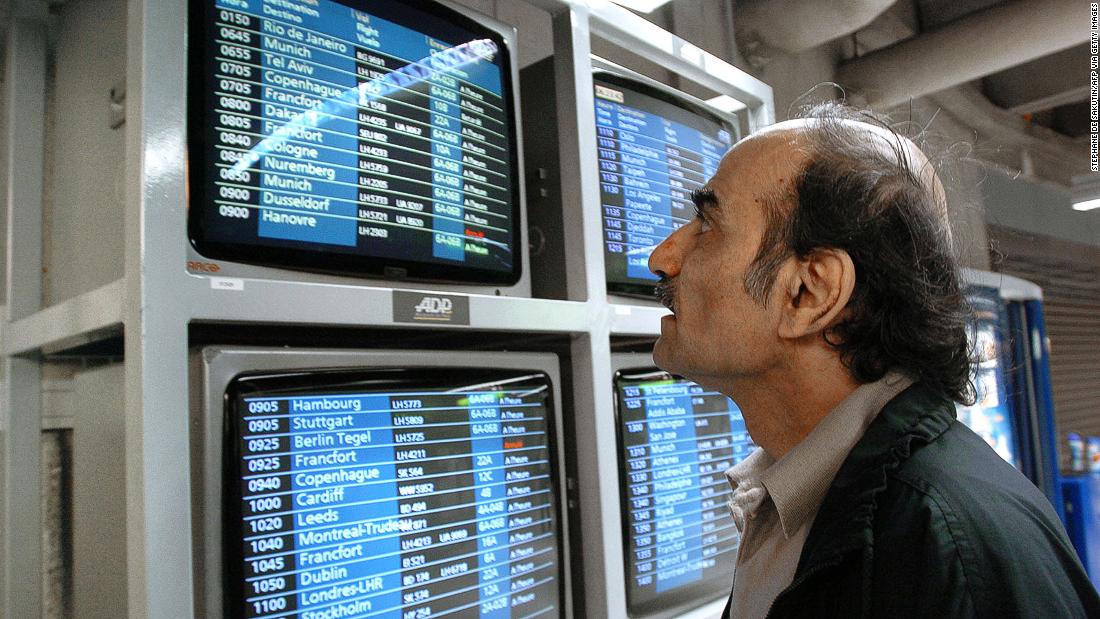
Singh, however, is far from the first to achieve an extended stay. After more than two decades studying the history of airports, I discovered stories of people who managed to take up residence in terminals for weeks, months and sometimes years.
Interestingly, however, not everyone who lives in an airport does it on their own.
Blending in with the crowd
Whether on video games like “Airport City” or scholarships on topics like “airport urbanism”, I often see the trope that airports are like “mini-cities”. I can see how this idea germinates: airports, after all, have places of worship, policing, hotels, fine restaurants, shopping and public transportation.
But if airports are cities, they are quite strange, since whoever runs the “cities” prefers that no one really takes up residence there.
However, it is possible to live in airports because they offer many of the basic amenities necessary for survival: food, water, toilets and shelter. And although airport operations do not necessarily operate 24 hours a day, 7 days a week, airport terminals generally open very early in the morning and remain open until very late at night.
Many of the facilities are so large that those who are determined to stay – like the man at O’Hare – can find ways to avoid detection for some time.
One way for aspiring airport residents to avoid detection is to simply blend in with the crowd. Before the pandemic, United States airports received 1.5 million to 2.5 million passengers on any given day.
Once the pandemic hit, the numbers dropped dramatically, dropping to less than 100,000 during the first weeks of the crisis in spring 2020. Notably, the man who lived in O’Hare for just over three months arrived in mid-October 2020 as a passenger the numbers were experiencing a recovery. It was discovered and apprehended only in late January 2021 – just when the number of passengers dropped considerably after the peak of holiday travel and during the resurgence of the coronavirus.
Living in Limbo
Not everyone who sleeps in a terminal necessarily wants to be there.
If you travel by plane, it is likely that at one time or another you will find yourself in the category of short-term involuntary resident at the airport.
While some people may book flights that will require them to stay overnight at the airport, others are stranded at airports because of missed connections, canceled flights or bad weather. These circumstances rarely result in more than a day or two of residence at an airport.

Someone takes a break in the departure lounge at Tokyo Haneda Airport in March 2020.
PHILIP FONG / AFP via Getty Images
Then there are those who unwittingly find themselves in a prolonged and indefinite stay. Perhaps the most famous long-term involuntary resident at the airport was Mehran Karimi Nasseri (pictured at the beginning of this story), whose story allegedly inspired the film “The Terminal”, starring Tom Hanks.
Nasseri, an Iranian refugee, was on his way to England via Belgium and France in 1988 when he lost the papers proving his refugee status. Without his papers, he would not be able to board his plane for England. Nor was he allowed to leave Paris airport and enter France. He soon became an international hot potato as his case came and went between authorities in England, France and Belgium. At one point, the French authorities offered him permission to reside in France, but Nasseri declined the offer, allegedly because he wanted to reach his original destination, England. And so he stayed at Charles de Gaulle airport for almost 18 years. He left only in 2006, when his health decline required hospitalization.

The U.S. National Security Agency fugitive spill, Edward Snowden (center), was stuck in transit at Moscow’s Sheremetyevo airport from June to August 2013.
AFP via Getty Images
Homeless find refuge
While most involuntary airport residents are eager to leave their temporary homes, there are some who have voluntarily tried to make the airport their long-term residence. Major airports in the United States and Europe have long functioned – albeit largely informally – as shelters for homeless people.
Although homelessness and homelessness have a long history in the United States, many analysts see the 1980s as an important turning point in this history, as many factors, including cuts in the federal budget, the deinstitutionalization of the mentally ill and gentrification, led to a sharp increase in the number of homeless. It is in this decade that you can find the first stories about homeless people living in airports in the United States.
The coronavirus pandemic added an additional public health concern to this group of airport residents.
Most of the time, airport officials tried to provide help to these volunteer residents. At Los Angeles International Airport, for example, authorities have deployed crisis intervention teams to work to connect the homeless to housing and other services. But it is also clear that most airport authorities prefer a solution in which airports no longer function as shelters for the homeless.
Top image: a 2004 photograph shows Mehran Karimi Nasseri checking the monitors at Charles de Gaulle Airport, where he lived for almost 18 years. (Photo by Stephane de Sakutin / AFP via Getty Images).
Janet Bednarek is a professor of history at the University of Dayton.
